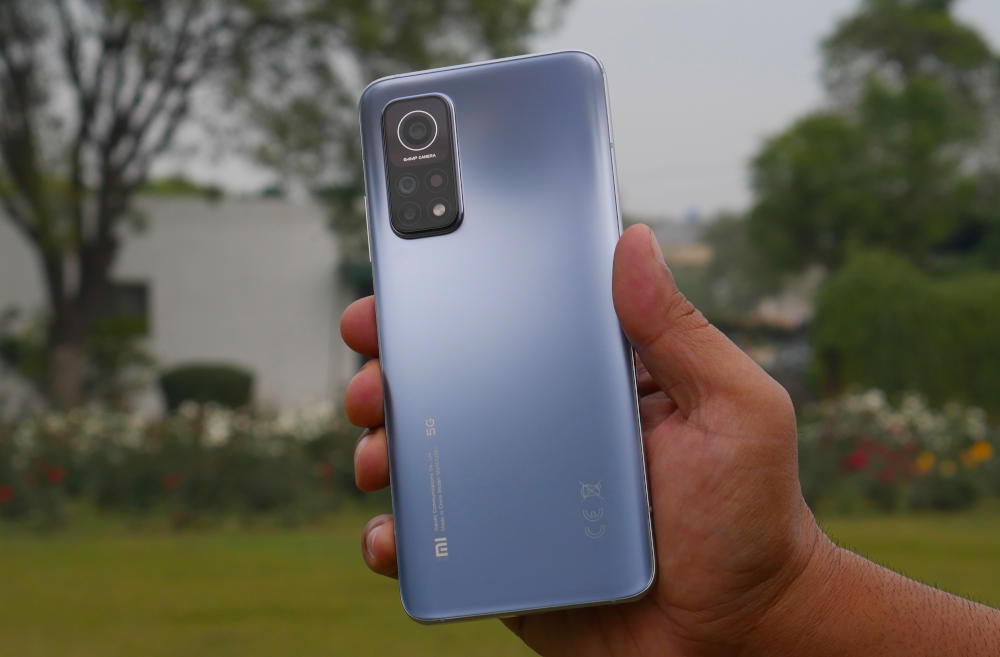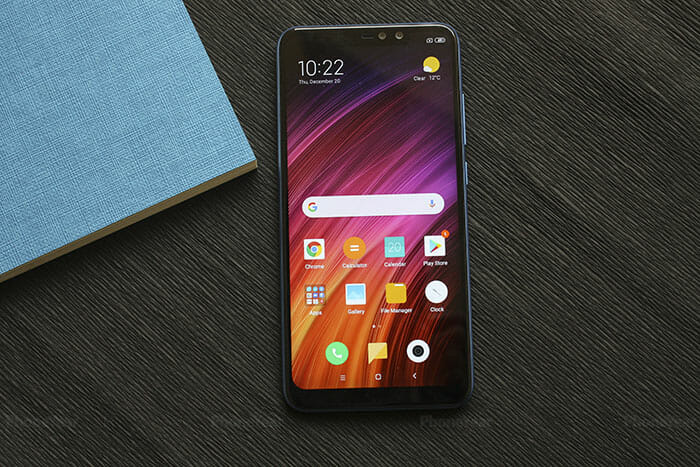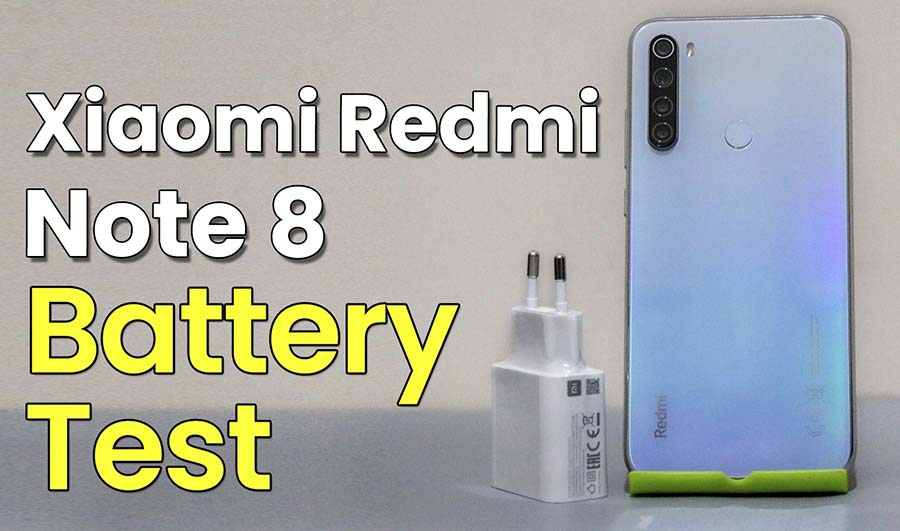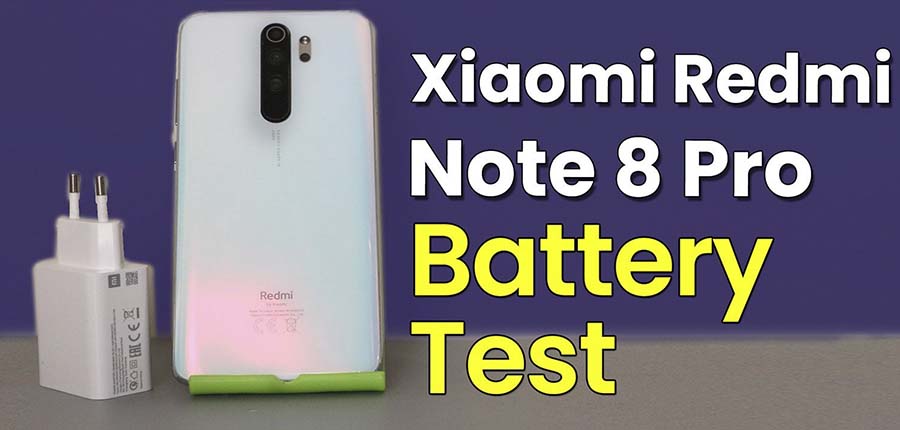Many Chinese smartphone companies have made great strides in the mobile phone industry by offering the best features in the market but Xiaomi, over the years, has set itself apart by equipping its devices with the flagship-level features at affordable prices. It managed to capture the attention of the youth with its ever-so-attractive and popular Redmi series which, since its inception in 2014, has sold more than 110 million units worldwide. Last year’s Redmi Note 8 Pro left a lasting impact on our hearts during our tests with its amazing camera experience and since then we have been curious to see what Xiaomi has been cooking up in its labs for the phone’s successor Redmi Note 9 Pro. In Rs. 44,999 the company has tried to squeeze in all the striking features in one phone let’s see if this is the mid-range device that we have been dying to see this year:
Display & Design
Xiaomi’s Redmi Note 9 series is quite consistent in its design language as the company is tying together a beautiful looking phone in a Corning Gloss Glass body (front and back) with a plastic frame. Even with the glass body, the phone does not feel slippery instead the curved edges make it easier for the user to keep a firm grip on the smartphone.
The phone is a fingerprint magnet and comes with a blackish silicon case right out of the box which though hides the device’s beauty from the user’s eyes, can keep the device stain proof. So basically you will have to make an inevitable choice between flaunting the phone’s beauty and keeping it safe.
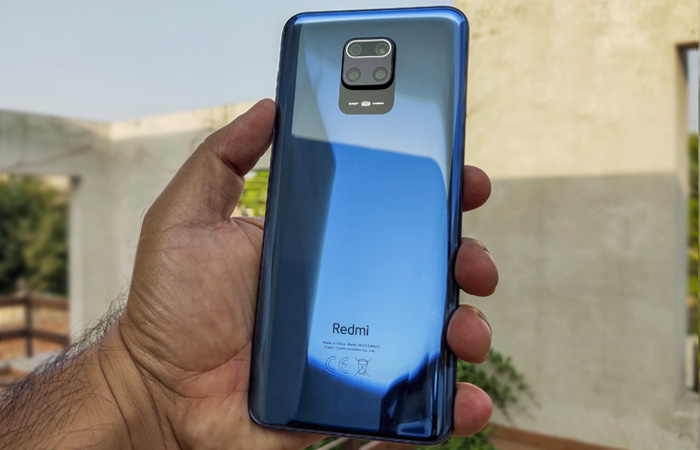
Similar to other devices in Redmi Note 9 series, the Pro variant flaunts a squarish camera module on the rear side. Just like its predecessor, it creates quite a prominent bump at the back which makes the phone wobble on the flat surface but the issue can be resolved with the company-provided back cover. The unique design of the Xiaomi Redmi Note 9 Pro will help the company to strengthen the design of the Note 9 lineup.
The Redmi Note 9 Pro is a slightly heavier device as it weighs 209gm and comes with a side-mounted fingerprint scanner which is nicely placed within the thumb’s reach. Only last year, we experienced this feature on the flagship Honor 20 Pro and it is exciting to see it quickly become a trend for entry and mid-range smartphones.
The union of the power key and the fingerprint scanner is smoothly indented which provides a comfortable grip on the button. The volume keys, however, are out of the thumb’s reach which requires using two hands to turn the volume up or down.
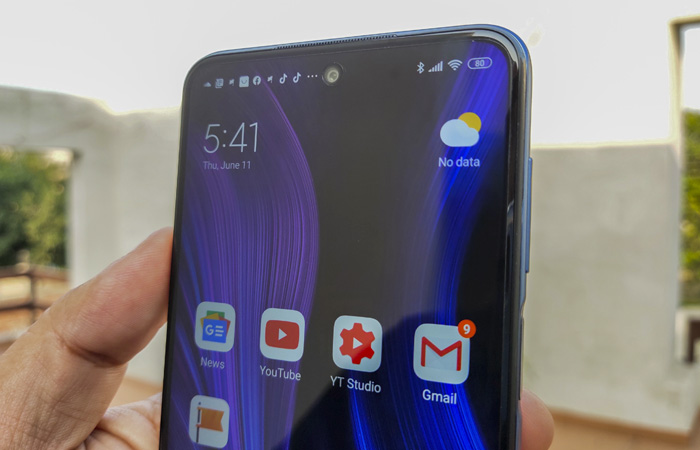
The selfie camera of Redmi Note 9 Pro hides inside the notch, placed at the front-middle, and is not aesthetically pleasing, especially when we live in the year when all other brands have found a better location for the punch hole housing single as well as dual front camera. It is about time that dewdrop notch design should be reconsidered by major brands especially those who have built their brand image around the beauty of their design.
Xiaomi Redmi Note 9 Pro features 6.67 inches of display which comes with 1080 x 2400 pixels of resolution and at 355ppi density it provides a sharp-looking screen, a commendable feat if we stop to consider that the phone has an IPS display.
The screen is reasonably bright for indoor and outdoor use but the only offside of the display is that it has a 60Hz of refresh rate especially when we can find 90Hz of refresh rate in Realme 6. The difference may not be a huge drawback for normal users but for hardcore gamers and movie maniacs it means a slight dent in an overall smooth experience.
Performance
Except for the standard Redmi Note 9, all other variants in the Note 9 series are equipped with Qualcomm Snapdragon 720G gaming chipset which is supported by Adreno 618 graphical unit. Built on an 8nm manufacturing process, the chipset provides quite a leap in performance in mid-range smartphones. It is surely an improvement in the performance spectrum as compared to MediaTek’s chipset which is present in the standard Note 9
Our Redmi Note 9 Pro review unit came with 6GB RAM and 128GB of internal storage. It scored 265930 on the Antutu benchmark which is quite close to Redmi Note 9S but fairly less than Huawei Nova 7i that scored 294377 in the same test. The phone’s chipset outperformed MediaTek’s based OPPO Reno 3 which scored 226720 on the benchmark.
Apart from numbers, we didn’t find the device lacking anything in the performance department. In real life-usage, just as we expected, the Redmi Note 9 Pro was snappier and proved itself to be a solid performer. The hardware supports Android 10 which works alongside MIUI 11.0 that still comes with lots of bloatware and annoying app install ads.
Battery
Xiaomi Redmi Note 9 Pro comes with a 5020mAh battery capacity, similar to all Note 9 models in the lineup. The Pro variant offers a 30W charger right out of the box whereas the Pro Max variant features a 33W charger and the 9S variant has an 18W charger.
Check out our ranking of the best mobile phones with the longest battery life
The smartphone took 2 hours and 13 mins to fully charge, 28 mins more than Redmi Note 9S despite the faster charger but it is still an acceptable number as the battery capacity is a little more than 5000mAh.
In our video loop battery drain test, the phone’s battery completely discharged in 14 hours and 1 min, a respectable number but Xiaomi’s latest device still couldn’t outperform Vivo smartphones in this test as their latest Vivo V19 device drained in 17 hrs and 38 mins.
Overall in terms of battery performance and consumption, Redmi Note 9 Pro can proudly stand beside some of the best devices in the market. During our 4 hours social media test, the device consumed only 37% battery as compared to 42% by Vivo V19.
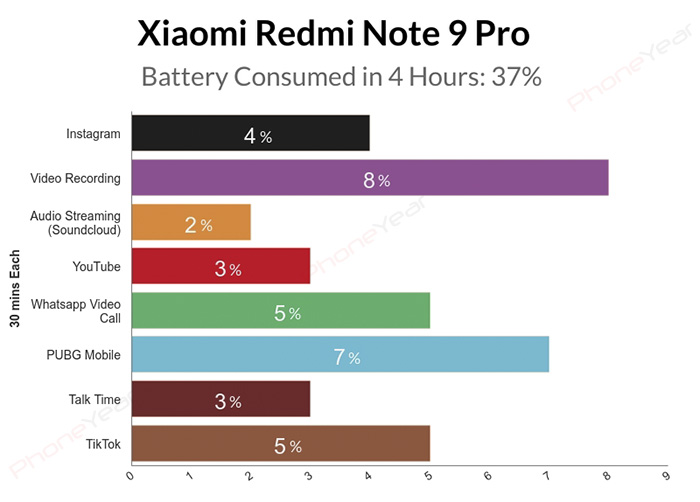
Camera
Xiaomi hasn’t made any drastic changes in the camera department from its predecessor, Redmi Note 8 Pro. The company which pioneered the 64MP camera has once again provided the same feature in their latest Redmi Note 9 Pro which is accompanied by an 8MP ultrawide lens, 2MP bokeh lens, and 5MP macro lens, upgraded from 2MP lens in Note 8 Pro, which still seems like a marketing gimmick. The selfie camera of the Redmi Note 9 Pro has been downgraded from the 20MP lens in the previous model to a 16MP shooter which sits inside the punch hole
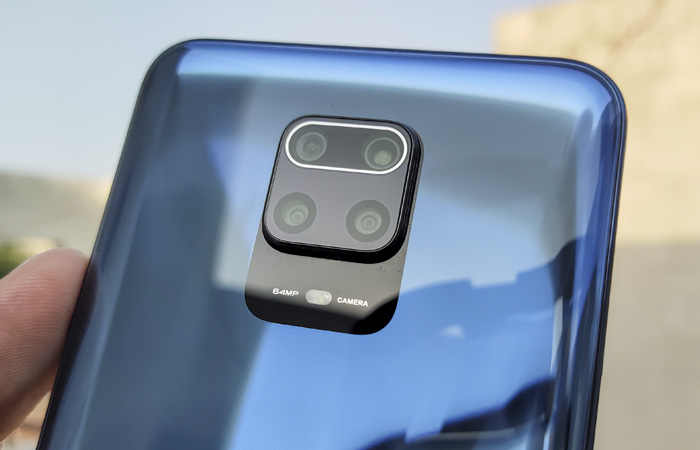
It is essential to note that in some parts of the world, the smartphone features a 48MP main lens instead of a 64MP camera but in Pakistan, we get the latter version. Though the 64MP lens is a bigger sensor and is becoming more common in phones, for instance, Samsung Galaxy A71 and OPPO Reno 3 Pro, we have not noticed any major changes in snapshots as compared to the 48MP lens.
In Redmi Note 9 Pro, Xiaomi is using the pixel binning method and produces 16MP standard shots unless you switch to 64MP from the settings. If you look at the following two images, you can see that there is no distinguishable difference between the picture taken by 64MP and 16MP standard mode.
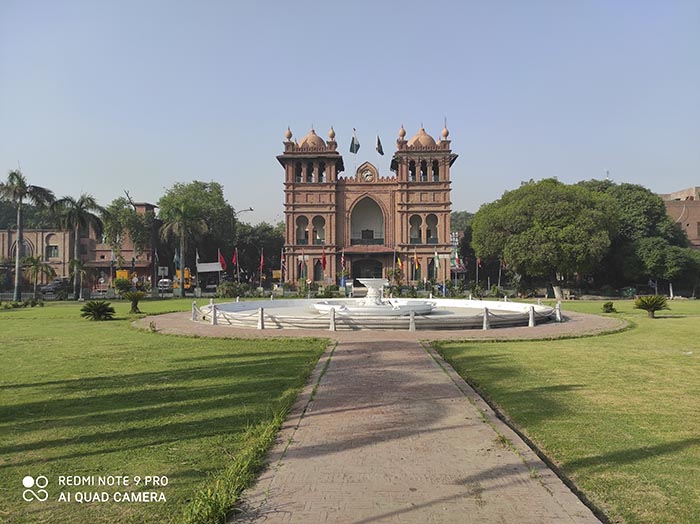
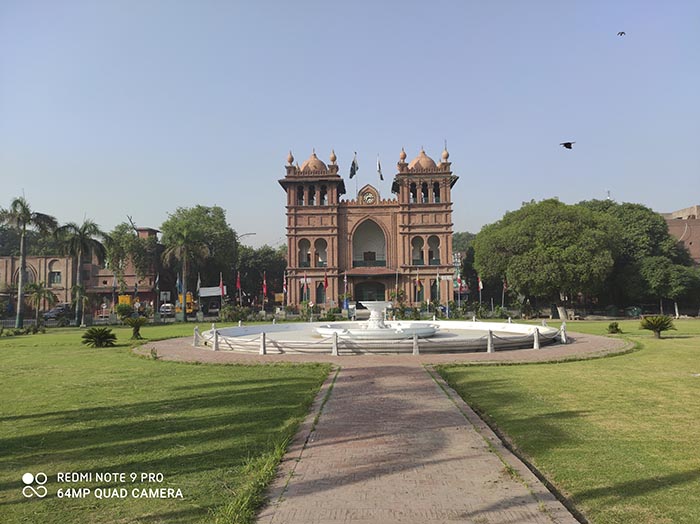
There is a high loss of detail in both the images and surprisingly what we could not see in the 16MP shot is still unnoticeable in the 64MP photo.

Moreover, a close look also reveals concentrated noise levels and washed-out colors, especially on the edges. Simply put, you do not get any more detail if you switch to the 64MP shot except for a bigger size picture which is not needed by most mobile phones and especially social media users
The camera is also highly sensitive to any changes in the light and the phone’s software is not much of a help to adjust the settings automatically depending upon the scenario. As you can see in the image below, the two same shots taken at different times of the day have a profound difference in detail; we cannot even see the structure of the bricks in the left image.
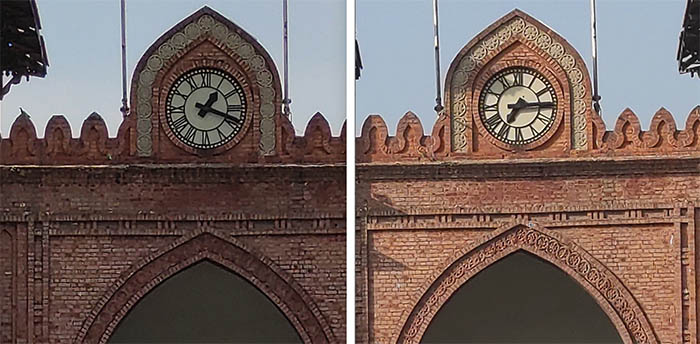
Redmi Note 9 Pro does not come with a telephoto lens and uses the phone’s software to take 2x shots as well as zoom up to 10x. Unfortunately, neither of them could capture a sharp or well-detailed image and we could see that the 2x shots reduced at least 60% of image quality. We would recommend that you take a picture using the 64MP lens and then crop the desired area for a closer look.
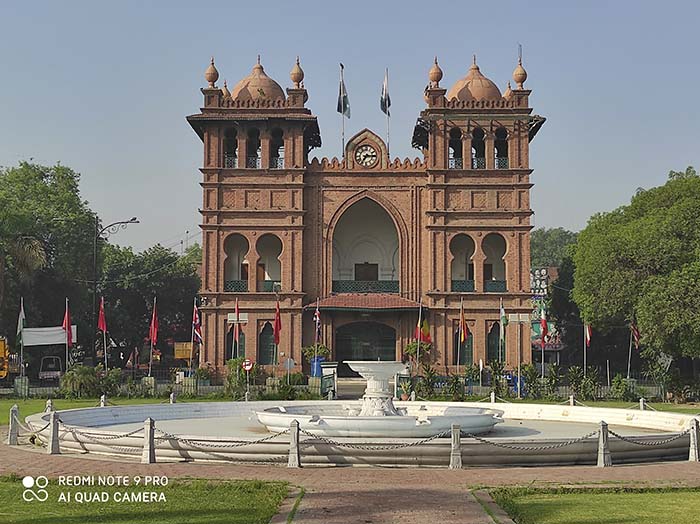
2x Zoom 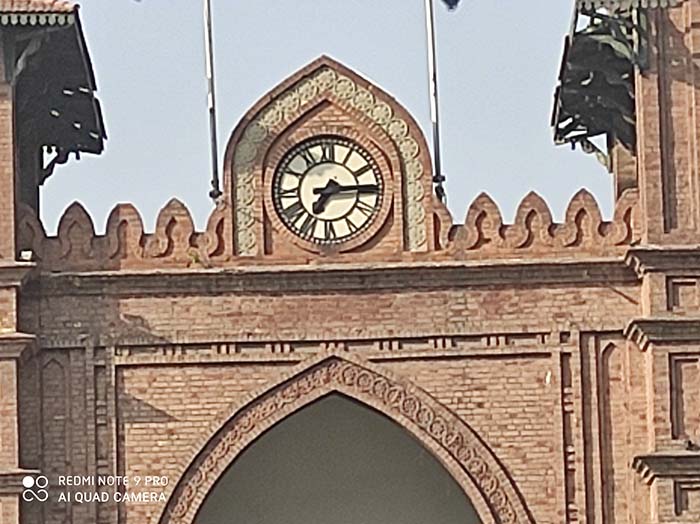
10x Zoom
The ultra-wide-angle images look a little higher in color contrast and saturation while the subject details are nowhere close to what can be captured by the phone’s standard mode.
During our low light performance test, we noticed that the performance of the Redmi Note 9 Pro was nowhere close to what we saw in its predecessor Redmi Note 8 Pro. The new device struggles to adjust to the light sources at night even with the Night Mode 2.0 which results in lens glare.
We also cannot see much of the details of the subject and the pictures come out flattened which is especially noticeable when you look at them on your computer instead of the mobile phone screen. This issue could be due to a software glitch in the Night Mode and we will have to see if any future update will resolve it.
However, if the subject is properly lit at night, the phone’s Night Mode works quite decently and shows better results due to improvement in controlling the white balance.
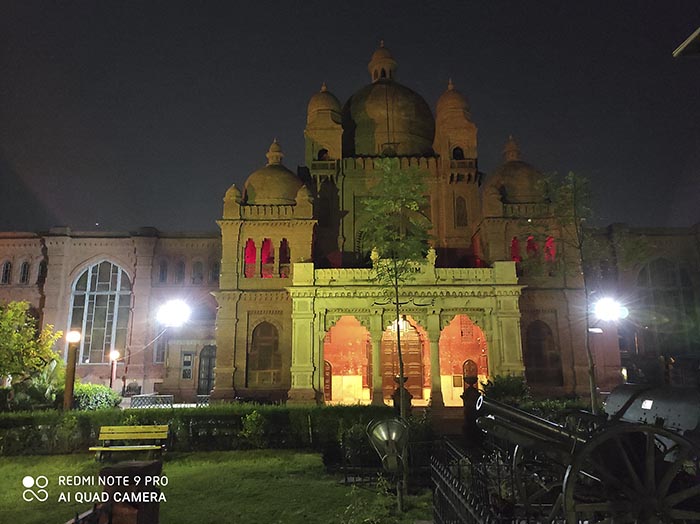
Standard 16MP

Redmi Note 9 Pro takes quite decent bokeh shots in the daylight with the help of 2MP bokeh and 5MP macro lens. You can take macro shots from a 2cm distance from the subject giving the user a little more control over their shaking hands. Though the images look vibrant on the mobile screen, while looking on the computer screen you can detect more noise, less sharpness, and ordinary subject mapping.


The smartphone can record stabilized videos at 720p and 1080p resolution and the video quality in both settings looks quite natural, showcasing reasonably acceptable quality. for 4k videos, however, there is no stabilization available and the videos come out highly oversaturated.
Verdict
Xiaomi Redmi Note 9 Pro comes with a reliable battery featuring a slow rate of consumption, beautiful design, and good performance but the phone’s camera performance is a big turn-off. In the camera department, the Pro variant has failed to surpass or even live up to the bar set by the Redmi Note 8 Pro. Though we can take some decent shots in the daylight, the much affordable Redmi Note 9S is more consistent in its performance with its 48MP main lens. At night, the issues with lens glare and absence of details add to the displeasure of using the phone’s camera.
For normal users, the 60Hz refresh rate of the display should not be a big problem but if you are an avid gamer, you should consider Realme 6. Overall, if you are looking to possess the best features of this phone and avoid the worst, you should consider Redmi Note 9S as it comes with the same Qualcomm Snapdragon 720G chipset, 5020mAh battery-faster charging than the Pro variant-and a great camera.
Alternative
Xiaomi’s slightly less expensive Redmi Note 9S comes with the same chipset and battery capacity as the Redmi Note 9 Pro and also offers a faster charging time, a handy feature if you are constantly on the run. When it comes to better camera performance, you will find its predecessor, Xiaomi Redmi Note 8 Pro, and Vivo S1 Pro priced less than Redmi Note 9 Pro, much more appealing. Vivo’s smartphone also provides a better battery consumption rate to keep your smartphone alive for a long time.

